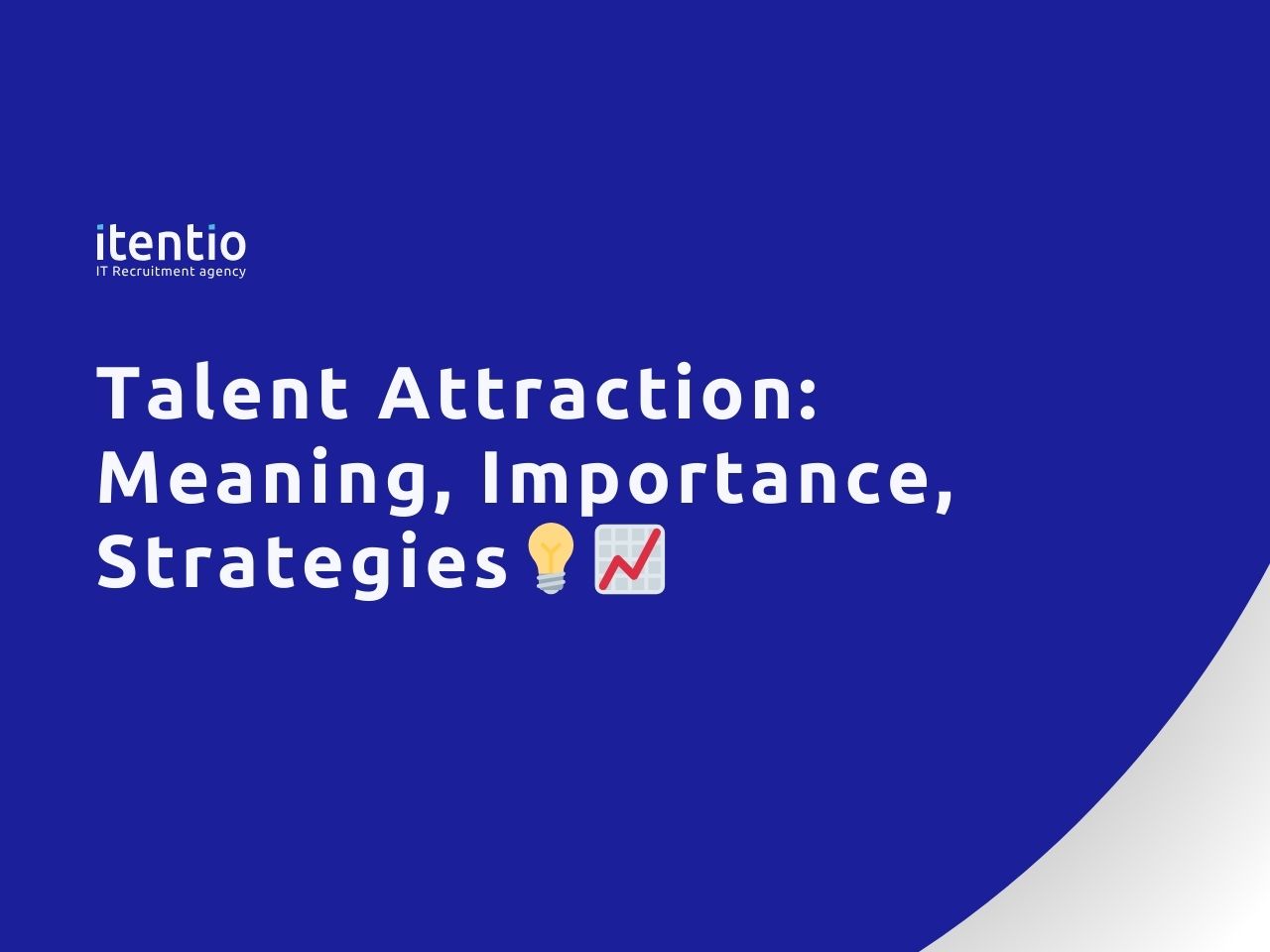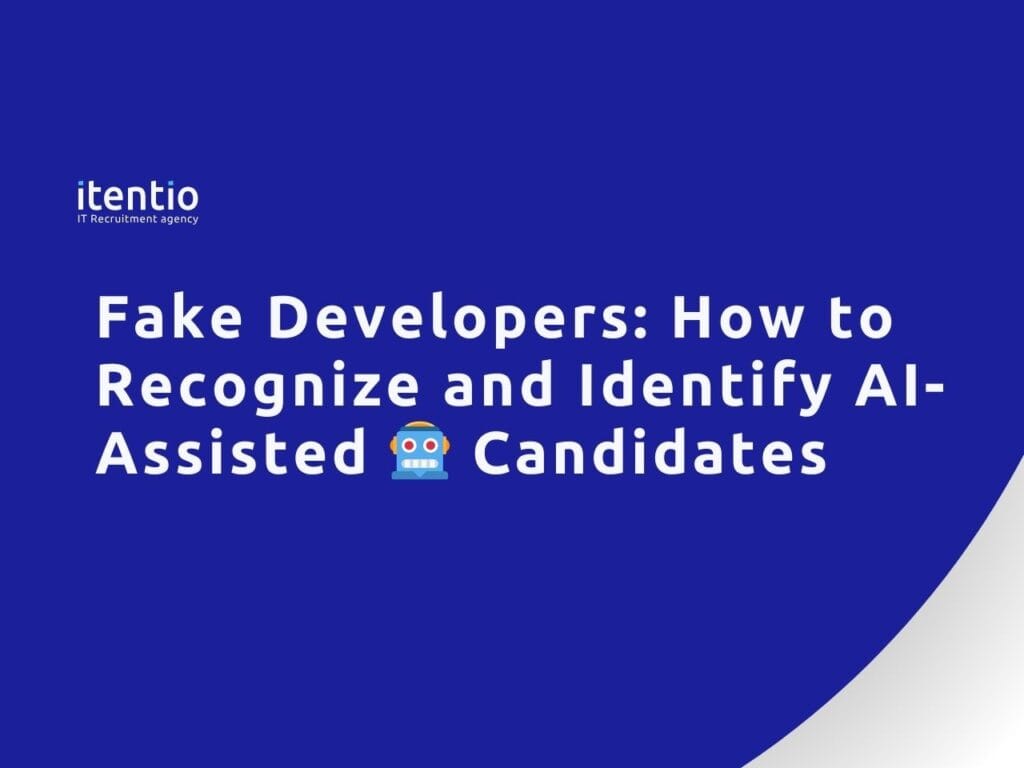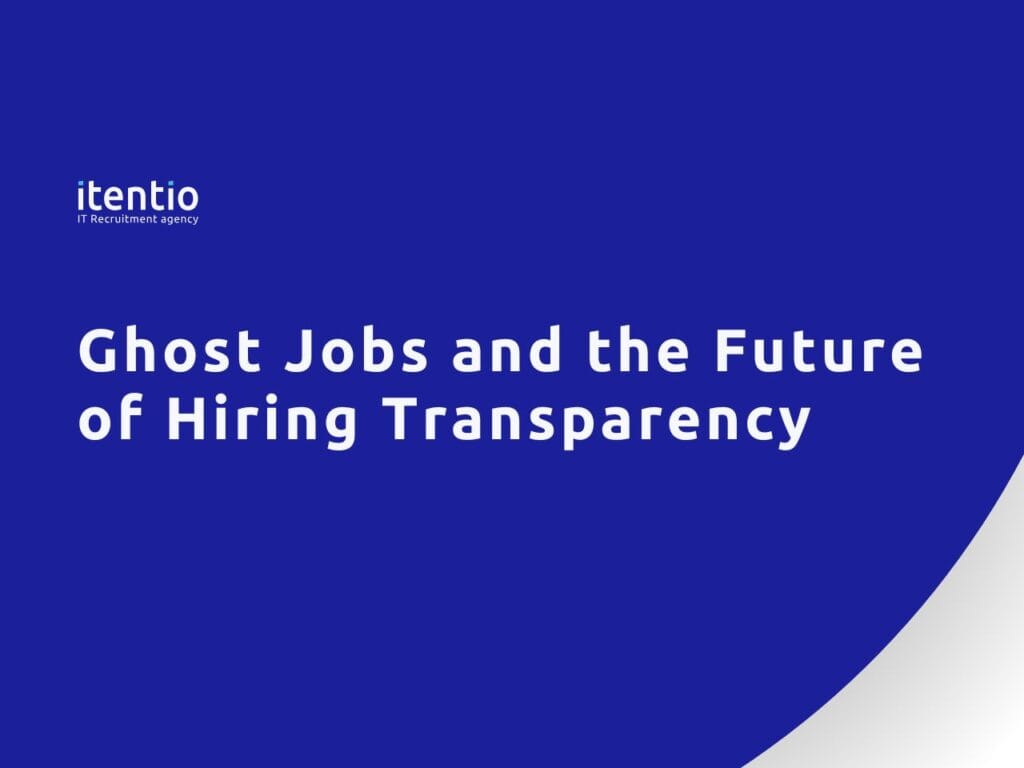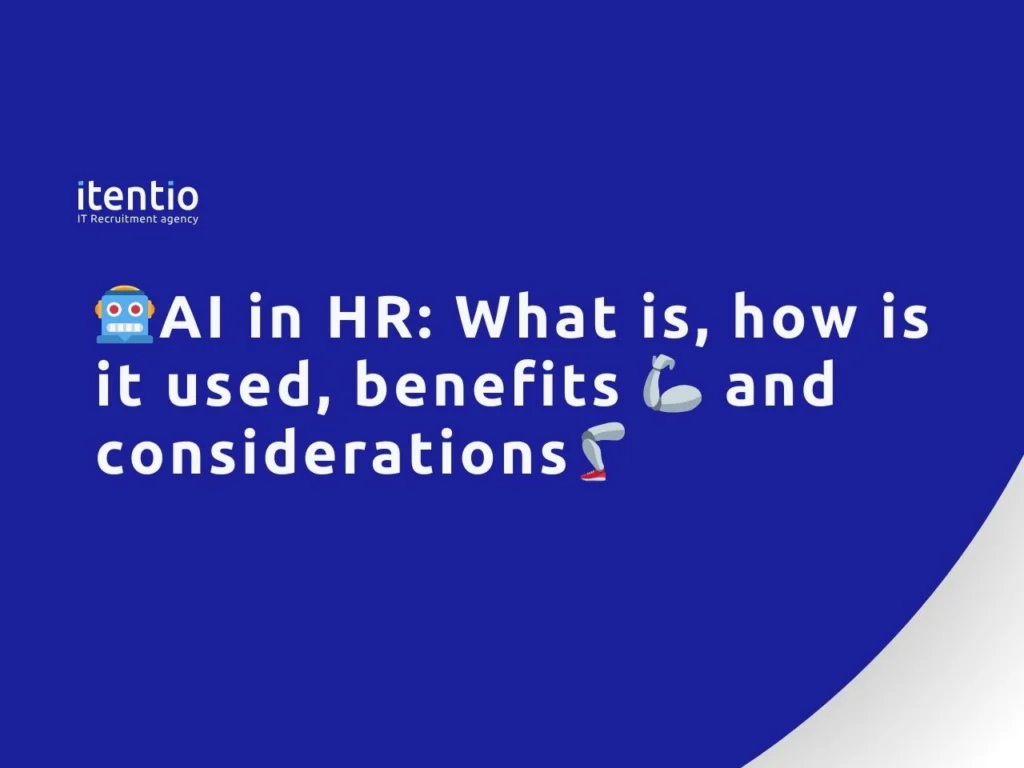This article will delve into the notion of Talent Attraction, disecting why it matters, strategies that work in practice and emerging trends that have been shaping how companies attract top talent to work with them. You are either new to the idea or you have been at it a while, you could find insights that will enable you more easily attract talent and build an outstanding workforce.
What is Talent Attraction? Meaning of TA
Identifying the right talent required is imperative for businesses of any scale operating in today’s technologically driven world. Whether creating a startup company necessitating the construction of a cohesive team from scratch or steering a larger organization in hopes of maintaining a competitive edge, attracting top-tier employees can either catapult or dispatch your success. But what exactly is “Talent Attraction” and why is it so prescient?
At its quintessence, Talent Attraction transcends not only filling job vacancies. Instead, it involves the identification, engagement with, and recruitment of candidates who not only possess the right skills and experience vital for the role but are also in line with and share the long-term goals and values of the organization. It’s simply about having a proactive strategy to build a detailed team that not only fits the company but also resonates with it’s mission and culture. This means understanding what potential candidates are looking for and figuring out if the company can meet, or even surpass, those needs.
Understanding the Fundamentals of Talent Attraction

A. Key Principles of Talent Attraction
Talent Attraction isn’t just about posting job openings and hoping the right candidates come knocking. It’s a more thoughtful, proactive approach that involves crafting a compelling message and reaching out to the right people at the right time. At its heart, Talent Attraction is about positioning your company as a place where people want to work. This involves understanding what makes your organization unique, what candidates are looking for in a workplace, and how to bridge that gap.
Talent Attraction transcends mere posting of job vacancies and hoping for the right candidates to emerge. Instead, it represents a more profound, proactive approach involving the crafting of an engaging narrative and targeted outreach to the most appropriate candidates at the right time. At its very essence, Talent Attraction involves the strategic positioning of one’s organization as a great destination where people want to work. This process requires understanding of the distinct characteristics that differentiate the organization from others, coupled with a profound comprehension of what potential candidates are looking for in a workplace environment.
To initiate this process, consider the facets that set your company apart. Is it the company’s innovative work environment? The commitment to employee development? The flexibility it offers? These unique features form the foundation of the Employer Value Proposition (EVP), which essentially encapsulates the promise that your company makes to its employees and potential hires regarding the expectations they can have while working with your organization.
Establishing a robust EVP is indispensable because it influences how potential candidates perceive your company. It extends far beyond salaries and benefits, embracing the entire experience of being part of the organization. When the EVP is crystal clear and effectively communicated, it aids in attracting individuals who share the organization’s values and are excited about the opportunities the company presents.
B. Differences Between Talent Attraction vs Talent Acquisition
Though often utilized interchangeably, Talent Attraction and Talent Acquisition are not synonymous entities. Comprehending their distinct nature can facilitate refined strategies and, ultimately, success in both realms.
Talent Attraction forms the first step in the recruitment process. It focuses on cultivating awareness and fostering interest in the company as a desirable workplace. Similar to how one would promote products or services to potential customers, Talent Attraction involves marketing the company brand to prospective employees. It is a long-term and continuous process that involves interacting with potential candidates even prior to the existence of specific job openings.
In contradistinction, Talent Acquisition constitutes the more tactical dimension that becomes operational once the interest has been generated. It encompasses the actual process of recruiting, interviewing, and hiring candidates for defined roles. While Talent Attraction lays the groundwork by bringing potential candidates to your doorstep, Talent Acquisition involves selecting and securing the ideal candidate to meet your organization’s requirements.
By emphasizing Talent Attraction first and foremost, companies can create a robust pipeline of qualified candidates, thereby rendering the talent acquisition process smoother and more effective.
C. Role of Employer Branding in Talent Attraction
Employer branding plays a pivotal role in Talent Attraction in today’s digital age where information about companies is readily available online. The way your company is perceived by potential candidates can significantly impact your ability to attract top talent.
Employer branding is about crafting the narrative around your company and ensuring that the story you tell resonates with your target audience. This involves showcasing your company culture, values, and what makes working at your company a unique and rewarding experience. Your brand should reflect the realities of your workplace, as authenticity is crucial in attracting candidates who will thrive within your organization.
To successfully build and sustain a strong employer brand, consider harnessing platforms where potential candidates spend their time—like social media, company review sites, and your own career page. Share stories about your team, highlight employee achievements, and offer insights into what it’s like to work at your company. A robust, positive employer brand not only draws in top talent but also aids in retaining employees who feel deeply connected to and proud of their workplace.
With a thorough comprehension of these basic principles, you’re well on your path to establishing a Talent Attraction strategy that brings in the right individuals to contribute to the growth of your company.
Key Strategies for Effective Talent Attraction

A. Building a Strong Employer Brand
Formulating a robust employer brand forms the foundation of Talent Attraction. Visualize it as the public image of your company as an employer. It encompasses how individuals perceive the experience of working at your company, and it directly impacts whether top talent will consider you as their next career progression.
Developing an Authentic Employer Value Proposition (EVP)
An Employer Value Proposition (EVP) is a well-defined statement that outlines the benefits your company provides to its employees in exchange for their skills, experience, and commitment. It’s the core of your employer brand and should encapsulate the distinct features of your company that differentiate you from competitors.
To create a genuine Employer Value Proposition (EVP), begin by collecting feedback from your current employees. What do they cherish most about working at your company? Is it the collaborative culture, the opportunities for growth, or perhaps the flexibility in work-life balance? Utilize these insights to craft an EVP that resonates with both your existing team and potential candidates.
Recall that your Employer Value Proposition (EVP) should be authentic and transparent. Overpromising or misrepresenting your company’s environment can lead to dissatisfaction and high turnover, which is the last thing you want after investing time and resources in attracting talent.
Showcasing Company Culture and Values
Your company culture and values are often what distinguish your workplace. They are what make your company, well, your company. Emphasizing these aspects can significantly influence your Talent Attraction efforts.
To effectively showcase your company culture, employ a variety of content types—videos, blog posts, employee testimonials, and social media updates. For instance, if teamwork is a core value, share stories of how your teams collaborate to achieve success. If innovation is at the heart of what you do, highlight projects that push the envelope and how your employees are encouraged to think outside the box.
When candidates can witness your company culture and values in action, they can more effectively determine if your company is the right fit for them. This not only aids in attracting the right people but also sets the stage for a strong, cohesive team.
B. Leveraging Digital Platforms for Talent Attraction
In today’s digital era, your online presence is one of the most potent tools for attracting talent. From social media to specialized job boards, the digital landscape presents numerous avenues to reach potential candidates.
Social Media Strategies
Social media serves as a serious tool for Talent Attraction, given that it’s a primary platform where numerous potential candidates spend considerable time. However, posting job openings is not enough. Successful social media strategies involve crafting engaging content that forges a meaningful connection with your audience.
Sharing behind-the-scenes glimpses of your workplace, highlighting employee achievements, and creating content that mirrors your company’s values and culture can all contribute to a more compelling social media presence. Furthermore, engaging with followers through comments and messages can help foster a sense of community and make your company appear more approachable and relatable.
When crafting your content, it’s crucial to tailor it to the specific platform. LinkedIn, for instance, is an ideal stage for professional updates and showcasing thought leadership, whereas Instagram or TikTok might be more suitable for visually demonstrating your workplace culture through captivating visuals and short, snappy videos.
Job Boards and Career Websites
Traditional job boards like Indeed or Glassdoor, alongside industry-specific websites, still hold significant value as means of reaching candidates actively searching for new opportunities. Nonetheless, your own career website should serve as the primary hub for Talent Attraction.
Your career page should transcend being merely a list of job openings. It should be a comprehensive resource that offers profound insights into what it’s like to work at your company. Include sections on your company culture, employee benefits, and development opportunities to provide a well-rounded view. Utilize employee testimonials and videos to infuse a personal touch, thereby creating a compelling narrative that ignites enthusiasm in potential candidates about the prospect of joining your team.
Employee Advocacy
Your current employees can serve as your most potent advocates. When employees share positive experiences about your company on their personal networks, it lends a level of authenticity that’s challenging to attain through official channels alone.
Encourage your employees to share job openings, company updates, and their own stories on social media. Additionally, implement employee referral programs that reward team members for bringing in successful hires. When employees are proud to work for your company, their enthusiasm can be infectious, attracting like-minded talent who are eager to be part of your team.
C. Creating a Positive Candidate Experience
Attracting talent isn’t merely about getting people to apply; it’s also about guaranteeing that their experience throughout the recruitment process is positive and reflects positively on your company. A good candidate experience can serve as a indicator that sets you apart from competitors and leaves a lasting impression, even on individuals who ultimately don’t secure the position.
Simplifying the Application Process
A complex or time-consuming application process can deter potential candidates. Ensure your application process is straightforward and user-friendly. Avoid requesting unnecessary information and permit candidates to apply using their LinkedIn profiles or by uploading a resume.
The easier it is for candidates to apply, the more likely they are to complete the process. This doesn’t imply lowering your standards; rather, it means streamlining the process to remove any unnecessary barriers.
Enhancing Communication During Recruitment
Lack of communication is among the most significant complaints candidates have about the recruitment process. Keeping candidates informed about their status can substantially improve their experience.
Send timely updates after each stage of the process, and let candidates know what to expect next. If there are delays, communicate them. Even if the news is not what the candidate hoped for, prompt and respectful communication leaves a positive impression.
Providing Timely Feedback
Providing feedback is not merely a courtesy, it’s a powerful tool for building an attractive employer brand. Candidates appreciate feedback on their interviews, even if they didn’t secure the position. It shows that you value their time and effort.
When giving feedback, be constructive and specific. Highlight what the candidate did well and where they can improve. This not only aids them in their job search but also positions your company as one that values people, not just filling positions.
D. Using Data and Analytics in Talent Attraction
Data-driven decision-making isn’t just for marketing or sales—it’s a vital component of effective Talent Attraction. By harnessing data and analytics, you can refine your strategies and ensure that your efforts are yielding results.
Identifying Key Talent Attraction Metrics
To enhance your Talent Attraction strategy, you first need to comprehend what’s effective and what’s not. Important metrics to track are the number of applicants, the source of your hires (e.g., social media, job boards, referrals), the time-to-fill open positions, and candidate quality.
These metrics can help you identify which platforms and strategies are most effective, allowing you to allocate resources more efficiently. For instance, if you discover that social media posts are generating more qualified applicants than job boards, you might decide to invest more in social media campaigns.
Analyzing Recruitment Data for Insights
Beyond merely tracking metrics, it’s crucial to analyze the data for more profound insights. Examine patterns and trends that can guide your Talent Attraction strategy. For example, you might discover that certain job postings are more successful during particular times of the year, or that specific types of content resonate more with your target audience.
Utilize this information to continually refine your approach. Data-driven insights can help you remain ahead of the competition and ensure that you’re attracting the best talent available.
Emerging Trends in Talent Attraction
A. Impact of Remote Work and Flexibility

The shift towards remote work has profoundly altered how companies attract talent. What was once a benefit is now often viewed as a standard expectation, particularly among top candidates. The COVID-19 pandemic hastened this trend, and it’s evident that remote work will persist in some form.
Providing remote work options can substantially expand your talent pool. You’re no longer restricted to candidates in your immediate geographical area. Instead, you can entice talent from across the globe, bringing in diverse perspectives and skills that might not be available locally.
However, remote work also comes with its challenges. For instance, maintaining company culture and team cohesion can be more difficult when everyone is spread out. To address this, many companies are adopting hybrid models, where employees can choose between working remotely and coming into the office. Flexibility is crucial — candidates increasingly value the ability to balance their work and personal lives, and companies that can offer this are more likely to attract top talent.
In addition to remote work, offering flexible work hours can be another substantial draw. The traditional nine-to-five workday is becoming less relevant as people seek to tailor their work schedules to fit their lives. Whether it’s accommodating early risers, night owls, or parents juggling childcare, flexibility in work hours can make your company more appealing to a broader range of candidates.
B. Importance of Diversity and Inclusion in Attracting Top Talent
Diversity and inclusion (D&I) are no longer just buzzwords—they’re vital components of any effective Talent Attraction strategy. Candidates today, especially younger ones, want to work for companies that reflect their values, and D&I is high on that list.
Creating a diverse and inclusive workplace begins with your Talent Attraction efforts. This entails not only reaching out to a broad range of candidates but also ensuring that your hiring processes are free from bias. Consider adopting blind recruitment practices, where identifying details like names, ages, and genders are removed from applications, allowing candidates to be judged solely on their skills and experience.
Inclusion is about more than just bringing diverse voices to the table — it’s about ensuring those voices are heard and valued. This means cultivating a culture where everyone feels welcome and has the opportunity to succeed, regardless of their background. Companies that prioritize D&I not only attract top talent but also reap the benefits of increased creativity, innovation, and employee satisfaction that come from a diverse workforce.
It’s also crucial to showcase your commitment to D&I in your employer branding. Highlight your efforts to create an inclusive workplace, whether through employee resource groups, diversity training, or community initiatives. Candidates who see that you’re serious about D&I are more likely to want to be part of your team.
C. Role of AI and Automation in Recruitment
Artificial intelligence (AI) and automation are increasingly being used to streamline the recruitment process, making it more efficient and effective. From sorting through resumes to scheduling interviews, AI can handle many of the repetitive tasks that take up recruiters’ time, allowing them to focus on more strategic aspects of Talent Attraction.
One of the most substantial benefits of AI in recruitment is its ability to reduce bias. AI algorithms can be programmed to focus solely on the qualifications and experience of candidates, without being influenced by unconscious biases that can affect human decision-making. This can lead to a more diverse candidate pool and ultimately a more inclusive workplace.
AI can also be used to enhance the candidate experience. Chatbots, for example, can provide instant responses to candidate inquiries, keep them updated on their application status, and even conduct initial screenings. This not only accelerates the recruitment process but also ensures that candidates feel engaged and informed throughout.
However, it’s crucial to use AI and automation judiciously. While these tools can significantly enhance the recruitment process, they should complement, not replace, the human touch. Candidates still value personal interactions, and the final hiring decisions should always involve human judgment.
As technology progresses, staying abreast of the latest tools and trends in AI and automation will be essential to retaining a competitive edge in Talent Attraction.
By embracing these emerging trends, your company can stay ahead in the Talent Attraction game, ensuring that you’re not only bringing in top talent but also creating a workplace where they want to stay and grow.
Common Challenges in Talent Attraction and How to Overcome Them

Even with the best strategies in place, attracting top talent is not without its challenges. The job market is constantly evolving, and companies need to adapt to stay competitive. Below are some of the most common challenges in Talent Attraction, along with practical ways to overcome them.
A. Addressing Skill Gaps and Talent Shortages
One of the most daunting challenges facing companies today is the escalating skills gap. As industries undergo rapid transformation and novel technologies burst onto the scene, the demand for expertise and skills often surges ahead of the supply of suitably qualified professionals. This can pose a formidable obstacle in sourcing the ideal talent, particularly in high-stakes fields like technology, healthcare, and engineering, where competition for top-notch candidates is fierce.
How to Overcome It:
- Consider investing in training and development initiatives to bridge the skills gap. Rather than solely focusing on finding candidates who possess the exact skills required, companies can invest in training programs to upskill both current employees and new hires. This approach not only helps to bridge the skills gap but also makes the company more attractive to potential candidates who are seeking growth opportunities.
- Consider expanding your search criteria. Rather than insisting on candidates who meet every single requirement, companies should be open to individuals with adjacent skills or those who demonstrate the potential to grow into the role. By focusing on potential and cultural fit, companies can bring in talented individuals who can develop the specific skills their organization needs.
- Consider partnering with educational institutions to create programs that prepare students for the specific skills required in their industry. By collaborating with universities, trade schools, and other educational institutions, companies can build a pipeline of future talent and position themselves as leaders in industry education.
B. Competing with Larger Corporations for Talent
Small and medium-sized businesses (SMBs) often face a daunting challenge when competing with larger corporations, which typically offer higher salaries, more comprehensive benefits packages, and a well-established brand reputation. This disparity can make it particularly difficult for SMBs to attract high-caliber talent, particularly in a highly competitive market where job seekers are abundant and their options are wide-ranging.
How to Overcome It:
- Highlight Your Unique Advantages: While small and medium-sized businesses may struggle to compete with larger corporations on factors like salary and benefits, they can offer a variety of unique advantages that may appeal to candidates. Rather than attempting to match the salaries of larger companies, SMBs can highlight aspects such as a more personalized work environment, greater opportunities for career growth, and a stronger work-life balance. Additionally, small companies often foster a sense of community among employees and provide opportunities to make a significant impact, which can be very appealing to many job seekers.
- Offer Flexible Work Arrangements: Flexibility is a quality that is increasingly sought after by job seekers, and smaller companies are often well-positioned to offer this advantage over larger corporations. Whether it’s remote work, flexible hours, or the opportunity to shape one’s own role, offering flexibility can be a powerful selling point for SMBs.
- Leverage Your Employer Brand: Smaller companies can also benefit from building a strong employer brand that effectively communicates their unique values, culture, and what sets them apart from larger corporations. By using storytelling to highlight the real experiences of employees and how they’ve grown with the company, SMBs can create an authentic image that resonates with candidates who are seeking more than just a paycheck.
C. Managing Expectations and Retention
While attracting the right talent is a crucial step for any business, retaining them is equally important. High turnover rates can be not only costly but also disruptive to the normal functioning of a company, making it essential to effectively manage expectations during the recruitment process to ensure that new hires are a good fit for the organization in the long term.
How to Overcome It:
- Set Clear Expectations from the Start: Be transparent about the role, responsibilities, and what the organization has to offer. This approach can help set realistic expectations and avoid overselling positions or company culture, factors that can lead to feelings of dissatisfaction and ultimately higher turnover rates. By offering a genuine preview of what candidates can expect, both the employer and employee stand a better chance of identifying whether the position is a suitable fit.
- Foster Employee Engagement: Engaged employees are significantly less likely to leave their positions, making it essential for companies to focus on creating a positive work environment that makes employees feel valued, heard, and challenged. Regularly checking in with the team, offering opportunities for development, and recognizing their contributions are all key strategies in fostering engagement. While attraction is the first step, sustaining engagement requires ongoing efforts to ensure that employees continue to feel fulfilled and motivated in their roles.
- Offer Competitive Benefits: While salary is indeed an important factor in employee retention, a comprehensive benefits package also plays a significant role. This includes benefits such as health insurance, retirement plans, paid time off, and wellness programs. To maintain a competitive edge, companies should regularly evaluate their benefits package to ensure it meets the needs of their employees and aligns with industry standards.
- Provide Career Development Opportunities: Employees are more likely to remain with a company where they perceive a clear path for professional growth and development. To foster this sense of growth, organizations should offer career development opportunities such as mentorship programs, training initiatives, and the possibility of advancement. This, in turn, can significantly reduce the likelihood of employees seeking opportunities elsewhere.
By addressing the common challenges of talent attraction, retention, and engagement proactively, companies can develop a more robust and effective Talent Attraction strategy. This approach not only helps to bring in top talent but also ensures that these individuals remain engaged and committed to the company’s success.
Measuring the Success of Your Talent Strategies

Evaluating the effectiveness of Talent Attraction strategies is a critical step in ensuring ongoing success. It’s not merely about bringing in new hires, but rather about attracting the right talent who can thrive within the company and contribute to its growth.To measure the effectiveness of Talent Attraction efforts, consider the following:
A. Key Performance Indicators (KPIs) to Track
To effectively measure the success of a Talent Attraction strategy, it is essential to track specific Key Performance Indicators (KPIs) that provide insight into various aspects of the recruitment process. We discussed main recruitment KPIs in our dedicated article, and the main focus should be at least on such as Time To Fill/Time to Hire, Quality of Hire, Source of Hire and Cost per Hire.
B. Analyzing Data for Continuous Improvement
Collecting data is a crucial first step, but it’s equally important to analyze it effectively to gain actionable insights. Regularly reviewing the KPIs established can help identify trends, strengths, and areas for improvement in Talent Attraction efforts.
- Benchmarking: Comparing your metrics against industry benchmarks or historical data within your company can provide valuable insights into how you’re performing relative to others or over time. For instance, if your time-to-fill is significantly longer than the industry average, it may indicate a need to streamline your recruitment process or adjust your attraction strategies.
- Identifying Bottlenecks: Using data to pinpoint where candidates are dropping out of the recruitment process can be a valuable step in refining the process. Are there specific stages where you lose more candidates? Identifying these bottlenecks can help you refine those parts of your process, whether it’s simplifying application procedures or improving communication.
- A/B Testing: In the same way that A/B testing is used in marketing to optimize campaigns, it can also be a powerful tool in Talent Attraction. By testing different job descriptions, headlines, or ad placements, you can determine which versions attract more qualified candidates. This approach allows you to optimize your efforts based on what resonates most with your target audience, leading to more effective Talent Attraction strategies.
- Feedback Loops: To maintain a competitive edge in a job market, it’s essential to create a feedback loop by regularly collecting and analyzing data. This data should then be used to make informed adjustments to your Talent Attraction strategies. Continuous improvement is important for effective attracting top talent.
C. Adapting to Changes in the Job Market
The job market is constantly evolving, influenced by factors such as economic shifts, technological advancements, and changes in candidate expectations. To maintain an effective Talent Attraction strategy, it’s crucial to stay adaptable and responsive to these changes.
- Stay Informed: It’s essential to stay informed about trends and changes of the job market. This can be achieved by regularly reading industry reports, attending webinars, and participating in networking events. Understanding the broader landscape helps anticipate changes and adjust strategies accordingly, ensuring that your Talent Attraction efforts remain relevant and effective.
- Be Agile: Flexibility is a key factor in Talent Attraction. Whether it’s adapting to a sudden increase in remote work demand or responding to a new competitor entering your market, being able to pivot your strategy quickly can give you an edge in attracting top talent.
- Experiment and Innovate: Don’t be afraid to try new approaches in Talent Attraction. Whether it’s adopting new technology, testing unconventional recruitment channels, or experimenting with your employer brand messaging, innovation can set you apart from competitors and attract candidates who are excited by your company’s forward-thinking approach.
Measuring the success of Talent Attraction efforts is a continious process that requires regular attention and adjustment. By tracking key metrics, analyzing your data, and staying flexible to changes in the job market, you can ensure your strategies will be effective in bringing in the talent your company needs to thrive.
Conclusion
Attracting top talent in today’s competitive job market demands a more proactive and multifaceted approach than simply posting a job opening and hoping for the best. A comprehensive Talent Attraction strategy that aligns with your company’s values, culture, and long-term goals is essential. This strategy should encompass a range of elements, including building a strong employer brand and fostering a positive candidate experience, as well as embracing emerging trends like remote work and AI.
Success in Talent Attraction requires continuous learning and adaptation. As the job market evolves, so must your approaches to attracting, engaging, and retaining the best talent. By implementing the best practices outlined in this article, such as prioritizing diversity and inclusion, offering flexibility, and leveraging data to refine your efforts, you can position your company as a desirable place to work and build a workforce that drives long-term success.
Talent Attraction is not just about filling positions; it’s about building relationships and environment where top talent wants to thrive. At Itentio IT Recruitment, Poland’s leading tech recruitment company, we utilize innovative and personalized talent acquisition approaches to attract the right people at the right moment. Let us assist you in constructing a technically proficient team that seamlessly aligns with your company’s culture and values.
React out to us now to explore our tailored tech recruitment services and witness how we can drive your business success in Poland.



